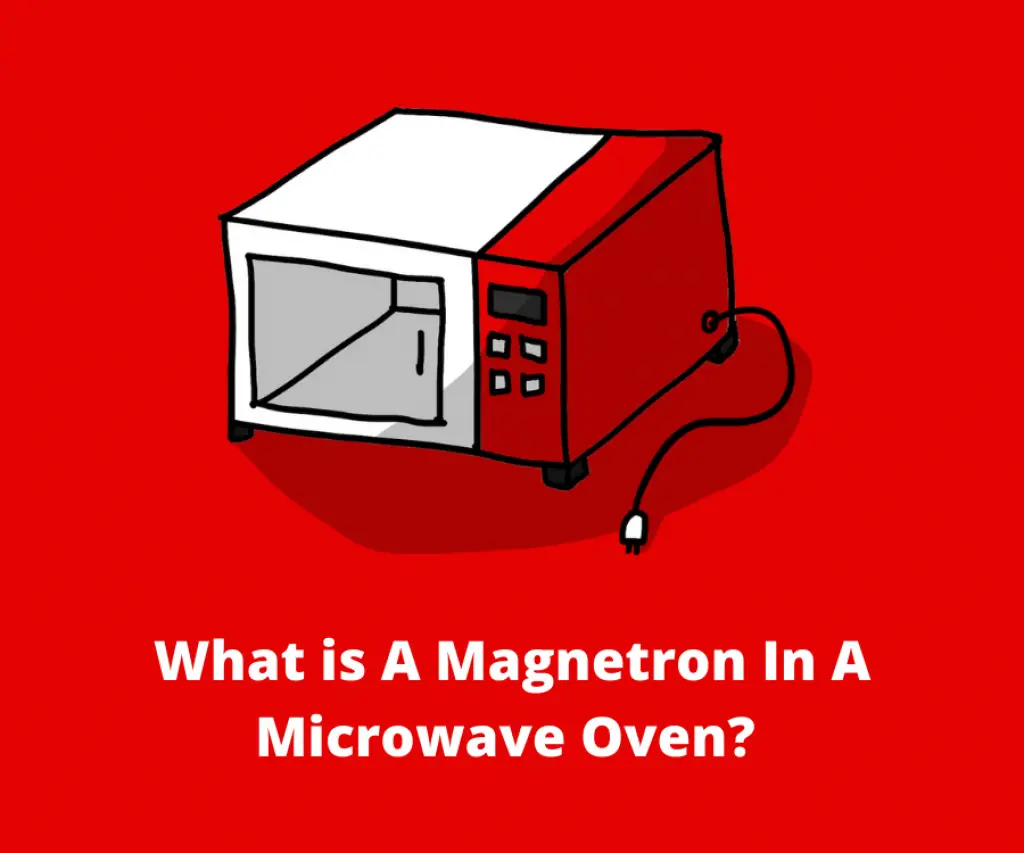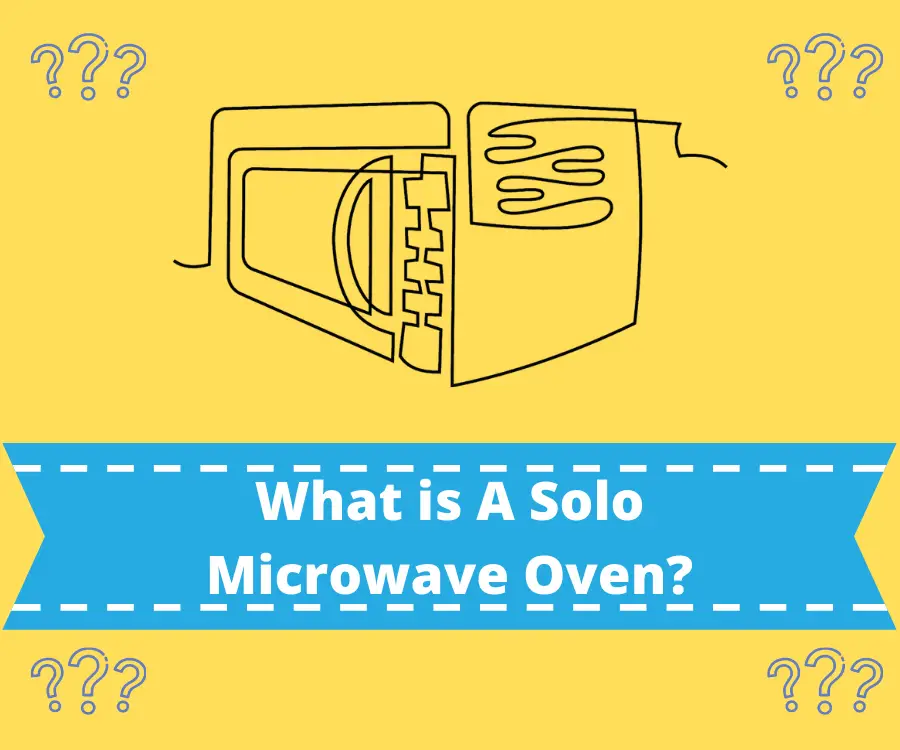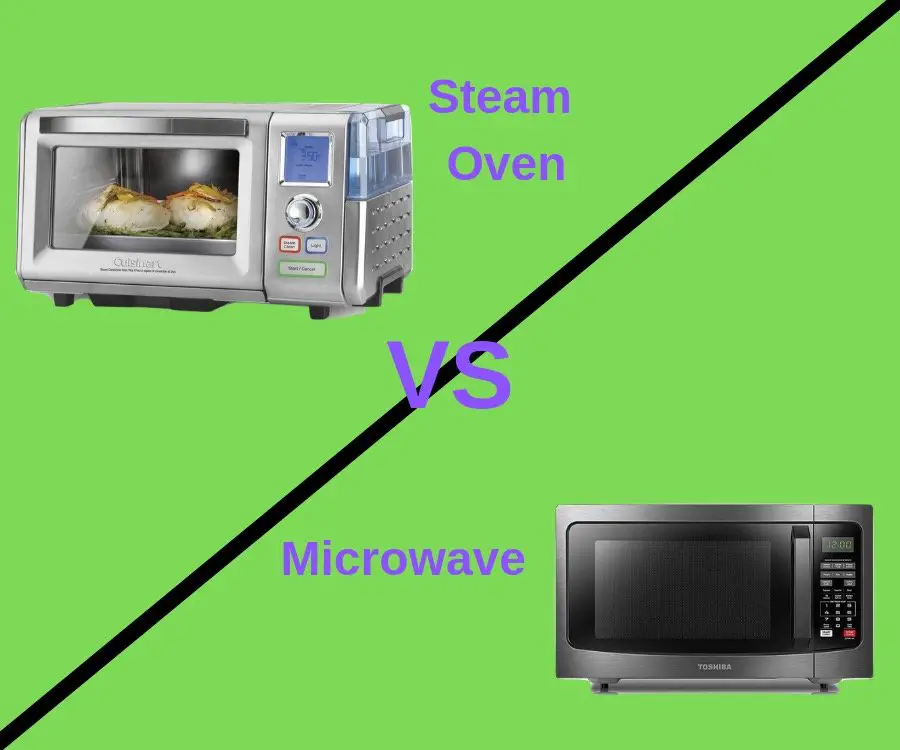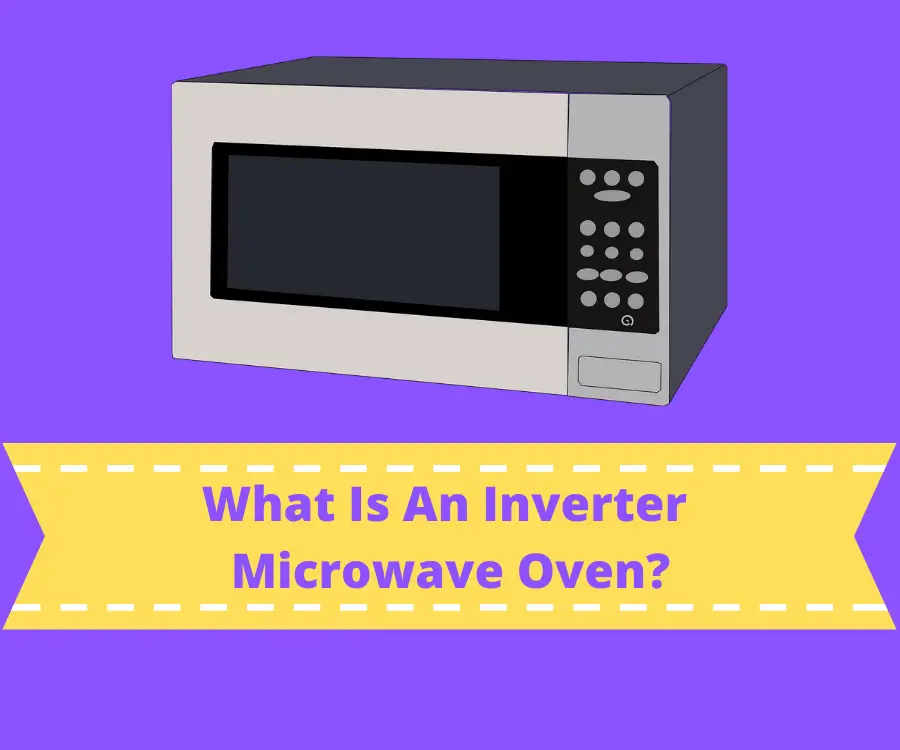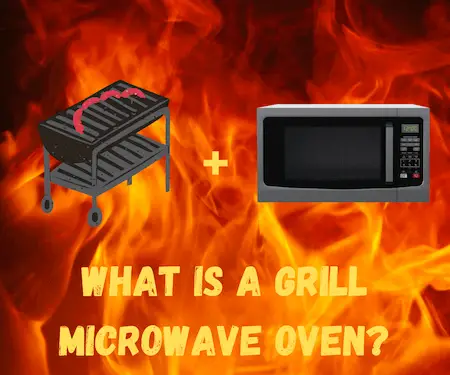What is a magnetron in microwave oven technology and how does it work? Have you ever placed something metal in your microwave oven and wondered why it all went wrong?
The answer to the second question lies in the answer to the first. In this post I will explain why you can’t put anything metal in the microwave, and why it has everything to do with the magnetron in a microwave oven.
So what is a magnetron in microwave oven technology? A microwave has a cavity magnetron inside of it that fires electrons at speed in a magnetic field that pass over cavities quickly. This generates microwaves that are channeled into the microwave oven. These microwaves excite water molecules in food creating heat which cooks food quickly.
So a microwave oven uses a magnetron to cook food at high speed. The above explanation provides the very basic information about how this happens.
Below I have gone into more detail about how a magnetron generates microwaves. I have also provided some interesting information about the invention of the magnetron, and who invented what we know today as the solo microwave oven, quite by accident.
Table of Contents
How Does A Magnetron Work In A Microwave Oven?
The workings of a magnetron are incredibly complex. When I looked into this I felt like I needed a degree in engineering just to understand the explanation.
I have tried my best to provide what I think is a reasonably understandable explanation below. I have broken the explanation down using the different parts of a magnetron.
Cathode
Right in the centre of a magnetron is something called a cathode. This is a solid rod made of metal. The cathode is an electrode that the current which has been created by electricity flows from to an anode.
Anode
Built around the cathode is a loop or ring made of metal. In simple terms when a magnetron operates, electrically charged particles or electrons jump across from the cathode to the anode. This sounds simple enough right? Things become slightly more complex with the introduction of magnets and cavities within the magnetron.
Magnet
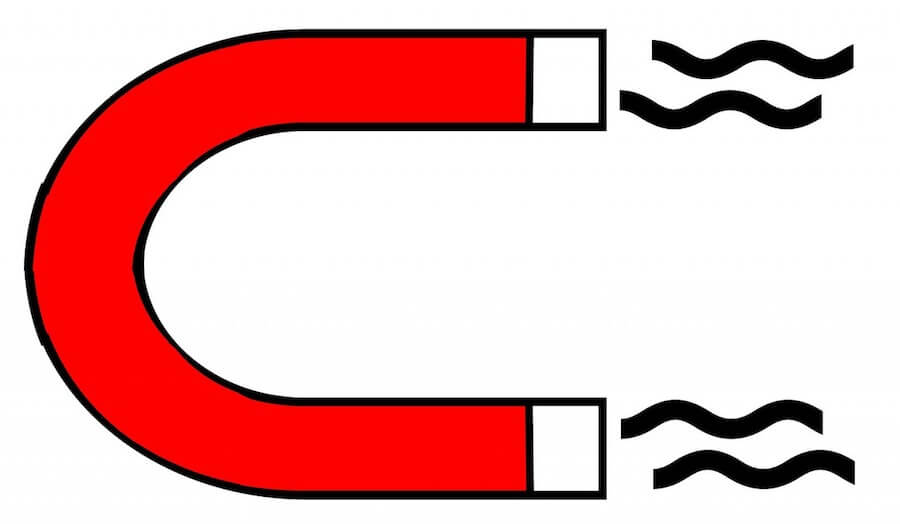
Running underneath the anode in a magnetron is a powerful magnet. This magnet runs along the magnetron directly parallel to the cathode.
Cavities
The kind of magnetron used in a microwave oven is called a cavity magnetron, and here we will see why. The cavities come in the form of holes cut into the previously discussed anode.
When the electrons are charged and passed between the cathode and anode, the addition of cavities and the powerful magnet make things much more complicated.
The electrons not only pass though an electric field crated between the cathode and anode, but also through a magnetic field created with the introduction of the magnet.
Due to the addition of the magnetic field, the electrons are influenced to move in path that is curved rather than in a straight line. The electrons move in a circle in the space in between the cathode and anode. This happens at an incredibly high speed.
As the electrons move around in a circular direction in this space, the cavities created in the anode begin to resonate. When they do this they create something called microwave radiation.
Waveguide
Once the magnetron has created microwave radiation, this needs to be channeled somewhere. This is where the waveguide comes in.
It is the waveguide that channels the microwaves created into the cooking space within a microwave oven. In radar technology these microwaves are beamed out via the waveguide into the air.
How Do Microwaves Cook Food In a Microwave Oven?
The above is really the simplest explanation I could give for how microwaves are created using a magnetron. How though do these microwaves then cook food in a microwave oven? Again the following is my own understanding of how this works. Feel free to add to this in the comments below.
Once the microwaves are passed into the cooking compartment of a microwave oven by the waveguide, they are reflected by the walls inside the microwave oven. So effectively they bounce around inside the microwave, being constantly reflected by the sides. The waveguide works slightly differently in a flatbed microwave than it does in a regular or solo microwave.
Once food is placed inside of the microwave oven it then absorbs the microwaves that bounce around inside of it. Once the microwaves are absorbed by the food they cause the water molecules inside of the food to vibrate extremely quickly.
These vibrations then produce heat, and it is this heat that cooks the food.
Any food that is high in water content will be cooked in a microwave extremely quickly. The more water molecules a food is made up of the more molecules there are to vibrate causing more heat at a faster rate. Foods such as vegetables that are high in water particles will cook very quickly in a microwave oven.

As mentioned above, the microwaves cannot be absorbed by metal. This is why they bounce around inside the cooking area of a microwave. This is exactly why you can’t place anything metal inside of your microwave oven.
For more information about this you can read my post on the advantages and disadvantages of microwave ovens.
Who Invented The Magnetron?
The kind of magnetron used in modern day microwave ovens is called a Cavity Magnetron. The multi-cavity magnetron used in microwave ovens is attributed to the work of John Randall and Henry Boot. Randall and Boot were engineers at the University of Birmingham.
Way before they were used in microwave ovens, magnetrons had another very important use. The use of magnetrons played a very important role throughout Word War Two. We can trace the origins of the magnetron back to before the work of Randal and Boot.
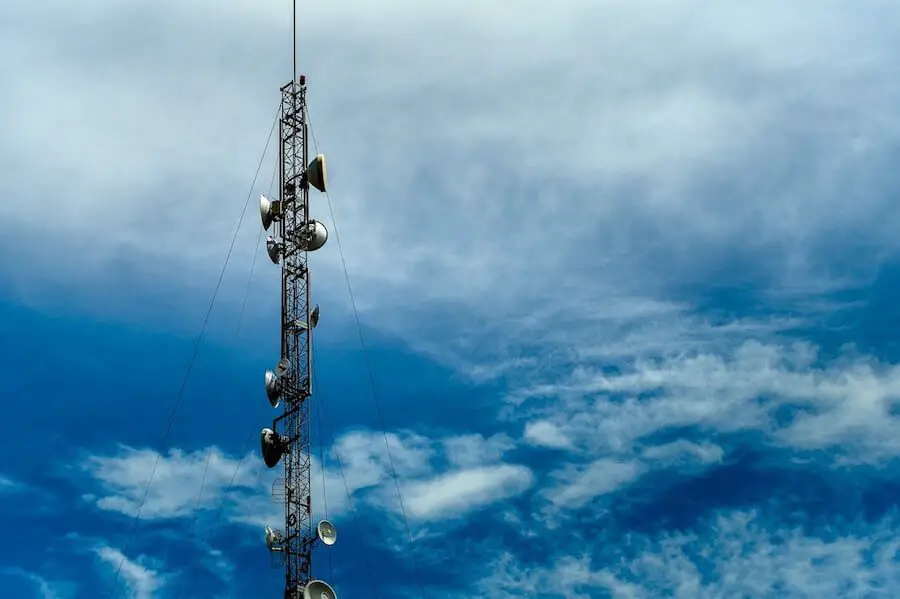
It is widely reported that the first magnetron was conceived and developed by H. Gerdien in 1910, way before the cavity magnetron in microwave ovens.
Heinrich Greinacher
In 1921 a Swiss physicist by the name of Heinrich Greinacher tried to further this work by using a diode tube. Ultimately his research failed due to insufficient vacuum in the tube.
He was however able to provide a written description with mathematical equations of how this magnetron was able to change electrons in the magnetic field.
In 1921 Albert Hull, an employee at the General Electric Company was able to use the work provided by Greinacher to further the research. He was able to study the control of electric current by varying the magnetic field. The called the invention he came up with the magnetron.
Albert Hull’s research was investigated and built upon by Erich Habann in Germany and Napsal Zazek in Prague. They were both able to develop significantly more powerful devices. Zazek was able to produce a device that generated much higher frequencies, up to 1 GHz.
Hans Enrich Hollman
In 1935 Hans Enrich Hollman filed a patent in Germany for the first ‘multi-cavity magnetron‘. The US patent of this device was filed and granted in 1938.
This leads us back to the work of John Randall and Henry Boot. They came up with a magnetron that consisted of more than the four cavities shown in Hollman’s work. The resultant device, which was water cooled, was used as a radar and fitted to aeroplanes during World War Two.
They were used in the war against German U-Boats. They allowed the pilots to see targets even during the night. This was significant breakthrough for the allied forces during the war.
Who Invented The Microwave Oven?
The invention of the microwave oven happened quite by accident. It was an American electrical engineer by the name of Percy Spencer who is ultimately regarded as the inventor of the microwave oven.
The Microwave Oven – An Accidental Discovery!
Prior to Spencer’s accidental discovery, there were already tests underway regarding the use of radio waves to cook food. Companies such as Bell Labs and General Electrics had already begun working on this form of technology to cook food.
In 1933, it was demonstrated by Westinghouse that it was possible to cook food between two metal plates. They used a shortwave radio to cook steak and potatoes. Even though this had been demonstrated, it really wasn’t taken any further than this at this point.
So back to Percy Spencer’s discovery. There are conflicting reports about what was in his pocket on the day of his discovery. Some report a peanut and some report a chocolate bar. What is clear is that he discovered, quite by accident, that microwaves from a magnetron could cook food.
Spencer worked at the Raytheon Manufacturing Company. At this time this company predominately worked with magnetrons as part of radar technology. They made radars that were capable of helping ships and planes navigate in the dark or in poor weather conditions.
The Chocolate Bar Story
While working on this one day in 1945 the story goes that Spencer had either a peanut or a chocolate bar in his pocket. I’m not sure which is true. The chocolate bar sounds more likely so I’ll go with that one.
So standing in front of a magnetron, and after switching it on, Spencer found that the chocolate bar quickly started to melt. This set him down a road of thinking that these microwaves created by a magnetron could possibly cook food.
The next day he cut the side out of a kettle and placed an uncooked egg inside. He then preceded to demonstrate that he could use the microwaves from the magnetron to cook the egg. It worked just as he predicted!
His next move was to try cooking some popcorn using the magnetron. Once he realized that this was possible, he went on to research this further.
In the early part of the 1950s he went on to file a series of patents. He filed one in 1952 for a microwave coffee brewer, which was granted. He also filed on in January 1950 for a ‘Method of Treating Foodstuffs‘.
Further Developments In Microwave Oven Technology
These days microwave ovens are tiny. You can fit them in the smallest places in your kitchen. However, Spencer’s original microwave oven was roughly 1.5 metres high. That’s 5 ft, as tall as some fully grown humans!
By the mid 1950s Raytheon licensed it’s microwave technology. Microwave ovens had already been used by restaurants prior to this. These microwaves were huge, and had to be constantly eater cooled due to over heating.
The first microwave oven for direct use by the general public went on sale in 1955, and was made by a company called Tapan. it was called the Tappan RL-1. This went on sale at a cost of $1,295. This was a huge some of money in those days, and would come out at around $10,000 in todays money.
By the 1960s they had come down to a slightly more affordable price of around $500. This is still hugely expensive, considering these days you can get a microwave oven for less than $50.
Conclusion
So there you have it. A full detailed description of the magnetron in microwave oven technology and exactly how it works.
Now I’m not a scientist at all! you be one and read this thinking that’s not the full story, or that I’ve missed something out! If so please feel free to leave a comment below and I will add your information into my writing! Thanks for reading!

